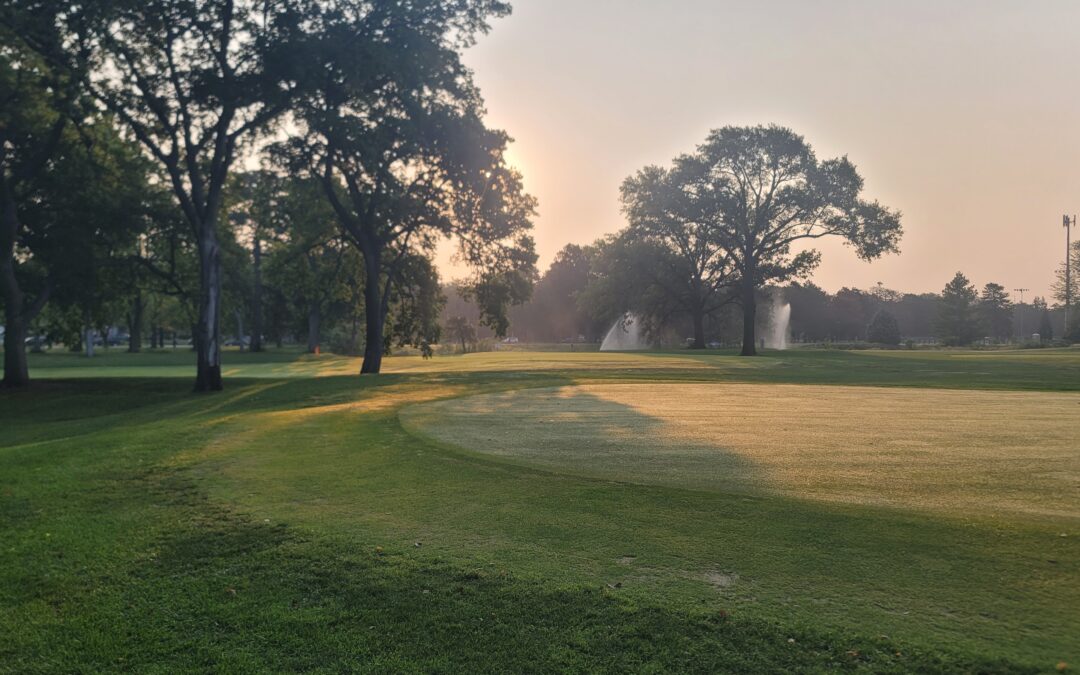Turf growing under shade stress is difficult to manage. Most grass species evolved in sunny growing environments. That means shorter day lengths and lower sun elevations during the fall can quickly lead to problems. The cause is simple, really. Energy in (sunlight) is being exceed by energy out (mainly leaf/clipping production). With that basic concept in mind, there are several ways turf managers can manage growth rate to improve the health of shaded turf.
Chad Allen, Golf Course Superintendent at The Club at Chatham Hills posted a revealing photo of his clipping volume buckets to LinkedIn. The bucket on the left was from a sunny green while the bucket on the right was from a shaded green. All other factors and management were the same.
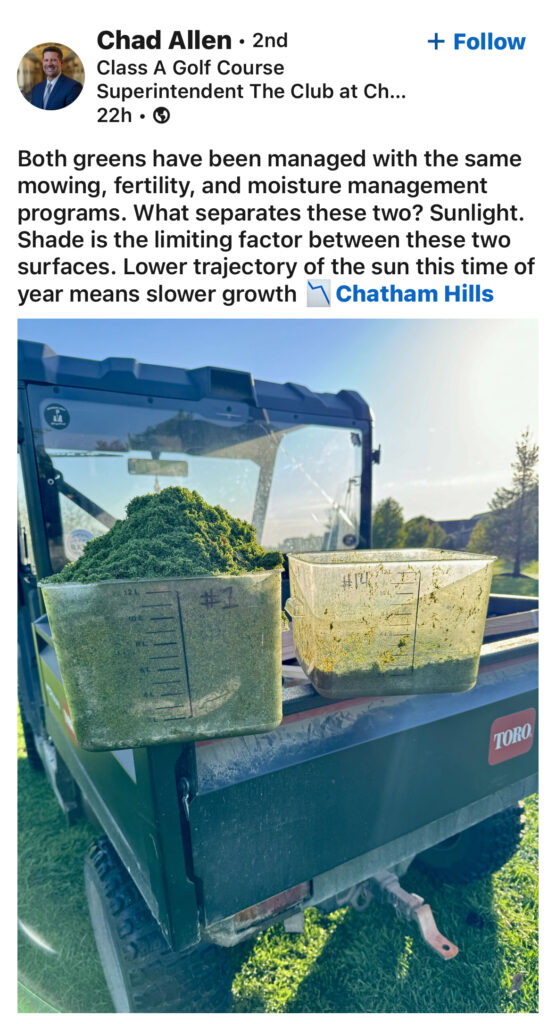
So how should turf managers maintain turf in these different growing environments? How can concepts of precision turf management help this scenario?
Clipping Volume Data Tells A Story
Grasses initially respond to shade by trying to outgrow the surrounding vegetation. In a prairie setting that would be other grasses and short broadleaf plants. The turf plants sense shade with phytochrome – a photoreceptor protein that controls production of the gibberellin. This is the same leaf enlongation hormone that is produced after nitrogen fertilizer is applied, and it’s also the hormone that is inhibited by Class A & B PGRs (Primo MAXX, Anuew, Trimmit, Cutless).
While turf clipping volume may initially surge as the grass plant tries to outgrow the trees in spring, the sugar stores in the plant start to decline. It takes a lot of energy to increase clipping volume. That is energy that could have support root growth, leaf density and traffic recovery. Instead that energy ends up in the mower buckets.
Shaded turf typically performs okay through early spring as warming temperatures, lengthening days, and higher sun angles accelerate photosysnthesis, but things start to change by mid-July. Tree shadows get longer, days start to shorten and high night temperatures mean the turf will start burning through sugar reserves. Clipping volume differences between shaded and full sun greens start to equalize as these carbohydrate levels decline.
Finally summer comes to a close and carbohydrate levels can be dangerously low. Even minor traffic stress or pest damage can be slow – even impossible – to recover until tree leaves start to fall. The clipping volume will dramatically decline as the turf holds on for its survival. This is the image that we are seeing in Chad Allen’s LinkdIn post.
If you have shaded greens, then tracking daily clipping volume from a representative full-sun and a representative shaded green can be incredibly helpful when trying to understand how the shade is affect turf health. It is also important to help direct maintenance practice to promote shade tolerance.
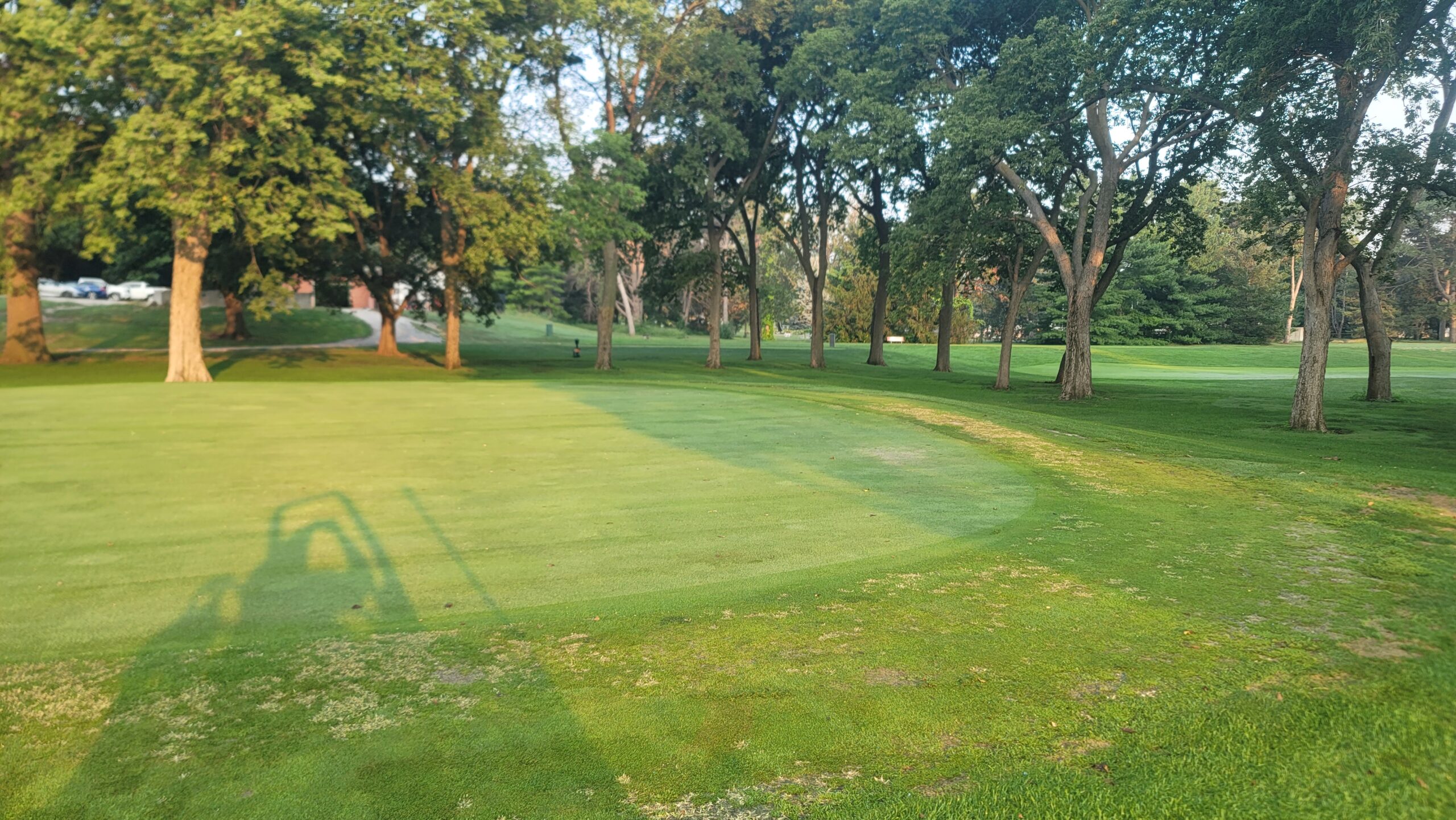
Growth Rate Management is Essential During Shade Stress
Turf growing under persistent, heavy shade is not long for this world, but seasonal and perennial shade stress can be managed with careful growth management strategies. The trick is to limit excessive growth and minimize damaging practices when sugar levels are low.
Nitrogen Fertilizer:
While it may seem counterintuitive, nitrogen fertilizer should be minimized during shade stress. Applications of nitrogen fertilizer trigger rapid leaf elongation and also increases the production of a large protein called RuBisCO. This protein is important for photosynthesis, but high levels during shade stress are inefficient and unnecessary. And as I stated earlier, the grass plants are already growing an an accelerated rate to attempt to outgrow the shade. Additional nitrogen fertilizer only exacerbates this condition and leads to more wasteful clipping growth.
Take Away: Be careful with nitrogen fertilizer before and during shade stress. Less is more in most cases.
Plant Growth Regulators (PGRs):
PGRs like Primo MAXX (trinexapac-ethyl) have been shown to improve tolerance to many turf stresses. Several research groups around the US have demonstrated the positive effects trinexapac-ethyl can have on shaded cool- and warm-season turf species. Fundamentally, they help prevent unnecessary clipping growth that burns through sugar reserves in the spring and summer.
A solid PGR program to help optimize #ClipVol over an entire growing season. However, it is important to adapt to changes in growth rate during the year. During the spring and early summer, shaded greens may require additional PGR applications, higher application rates, or PGR combinations to prevent wasteful clipping growth. As clipping growth – and internal sugar stores – decline during summer, both shaded and sunny greens may need the amount amount of regulation. Finally, shaded turf may need fewer PGR applications and lighter application rates than turf in full sun during fall. Why? Because that turf is already growing too slowly. It is struggling to handle traffic and other forms of stress.
Take Away: Use PGRs to manage growth rate but shaded turf may need more or less suppression than full sun turf depending on the season and plant health.
Cultural Practices:
Be careful with cultivation and excessive mowing and rolling as growth rate declines in late-summer and early fall. It is very common to see thinning where golfer traffic is greatest, locations where greens rollers change directions, and turn/pinch points for mowers. Minimize aggressive cultural practices in fall including aeration and topdressing. The slow recovery will likely be unacceptable for golfers, and it also opens the door for weeds like annual bluegrass to enter the canopy.
Other positive changes include raising the mowing height – it slows growth rate and increases leaf area index to maximize photosynthesis, and increase sun and airflow with tree pruning when possible. Even thinning the a tree’s canopy density can add “light fleks” within the shadow and increase sugar production.
Several products are marketed to improve shade tolerance. Biostimulants, micronutrients and even sugar containing compounds like molasses have been said to improve turf health during shade stress. In many cases there isn’t much research to support these claims, so ask for more research data – not just testimonials from other users. Test them in small areas at your course before adding them to your program. For example, I was skeptical that ENVU’s Stressgard product would improve shade stress. I then conducted a study under natural tree shade – 100 year old oak tree – and found that the replicated plots receiving Stressgard containing products had improved leaf density, turf quality and leaf color and reduced levels of moss encroachment. These types of replicated and independent studies can be valuable when making purchasing decisions.
Take Away: Watch for and move traffic patterns, limit cultivation when growth is low, and raise mowing height under shade stress.
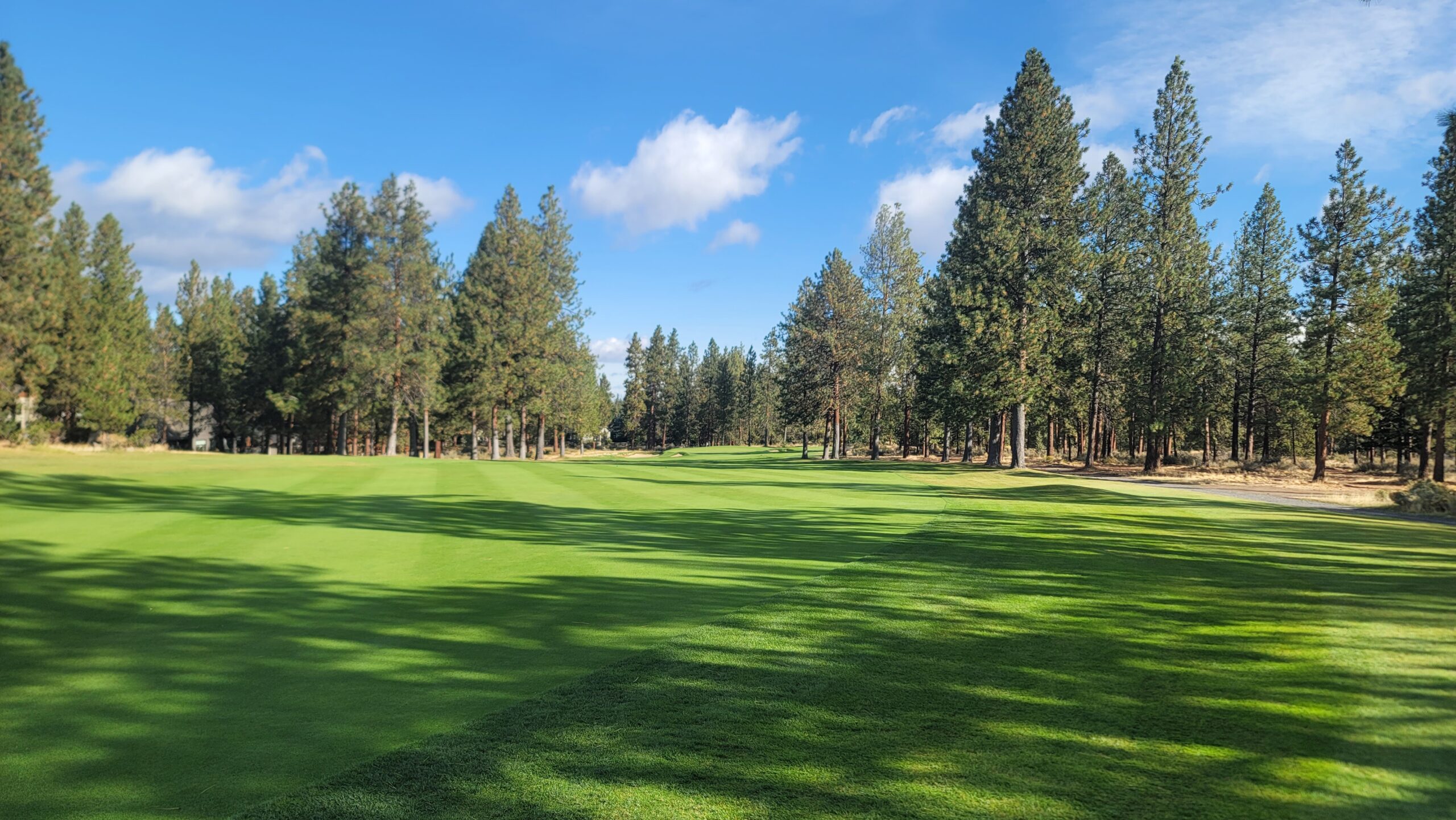
My Real-World Example
I’ve been dealing with shade stressed turf since I was in high school. I tried to grow a bentgrass green directly north of large Colorado blue spruce tree. I learned the value of a chainsaw in college. Again, I had a couple of greens at Jim Ager GC in Lincoln with shade issues, and I couldn’t bring a chainsaw to all of those issues. So here was my approach to shaded greens versus the sunny greens.
Track Clipping Volume: This was a required task every day; center bucket of the triplex only. I used these values to understand how the shade was affecting 5 Green versus the full-sun 9th Green. Then I could treat it – and the other shaded greens – differently from the other greens.
PGRs and Nitrogen: I didn’t fertilizer the greens differently, but I did adjust the PGR program. The full sun greens were on a steady (GDD-based) diet of Anuew (prohexadione-Ca) and Trimmit 2SC (paclobutrazol). Anuew was applied at the same mid-rate all year long while the Trimmit rate was increased into mid-summer and then reduced when clipping volume slowed with cooler nights and shorter days in fall.
During the spring, I would also spray the shaded greens with extra applications of Anuew between the normal apps. This was typically part of the Tee and Fairway PGR application. Then the shaded greens were treated the same during the summer. In late-summer and fall, I would mix up the sprayer with everything except the Trimmit. I would then spray the shaded greens with Anuew and other products. After I was done, I would add the Trimmit to the sprayer tank and treat the full sun greens with both PGRs. This was a simple way to adjust PGR rates and timings to manage growth rate and improve shade tolerance.
Cultivation: Mowing heights for all greens were increased from 0.090″ to 0.105″ in September. I would also skip mowing events when cool-weather slowed growth rate and elected to roll. We would also skip rolling the shaded greens or change roller directions to minimize extra wear. When that wasn’t enough, we would walk mow shaded greens. That change also helped a lot, especially on the cleanup passes.
I still had problems. Shade is a tough stress to manage. I can admit that raising mowing heights and reducing rolling could have helped more. I was balancing performance with turf health, and that’s what I loved to do at Ager GC.
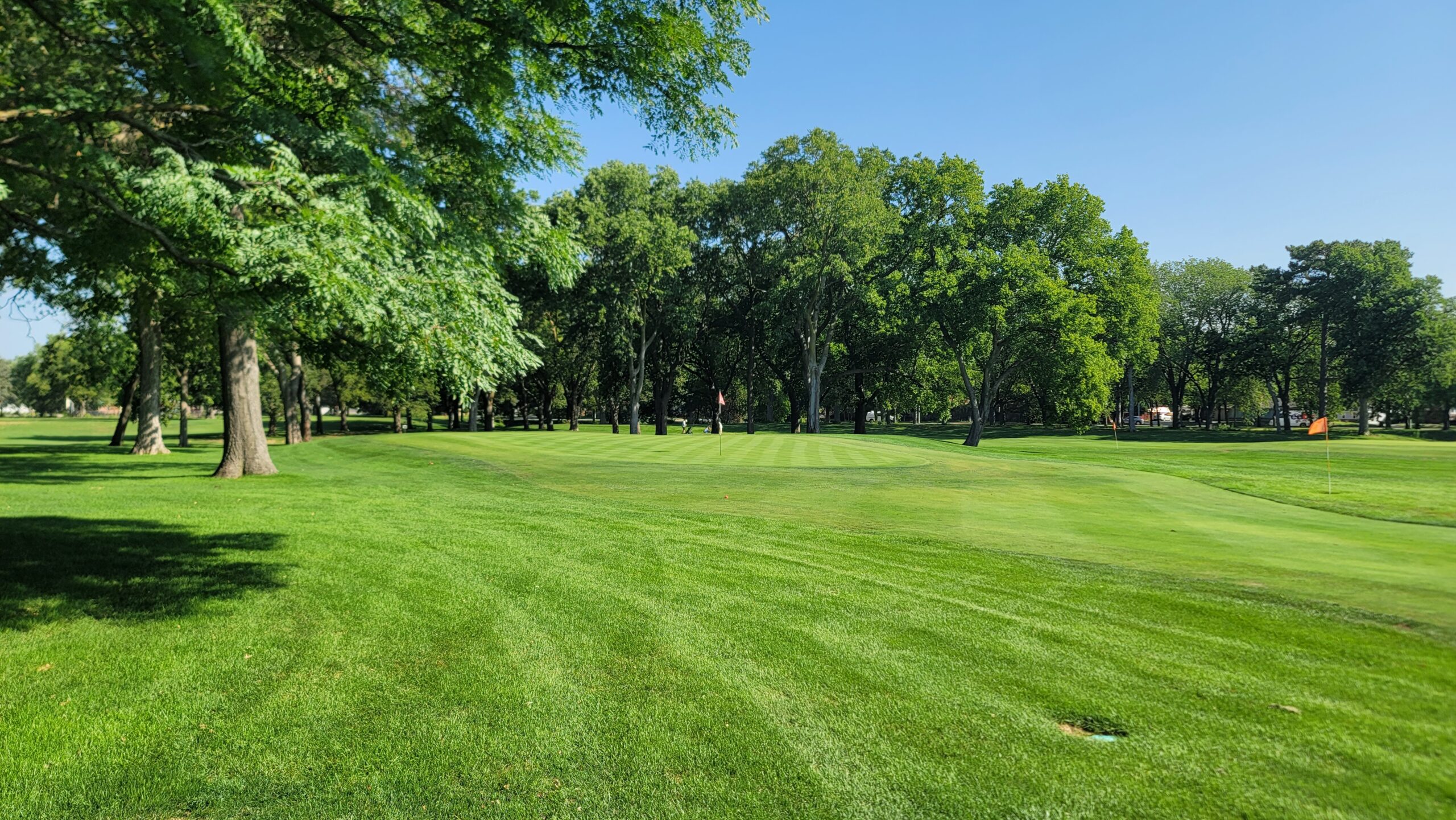
It’s Not always high tech
Precision turfgrass management doesn’t always need to be sensors and super computers. The principles of data collection and analysis to direct or alter management can be as low tech as measuring wet clippings in a clear bucket. The key is documenting observations, assessing trends in performance and using those interpretations to make confident management decisions.
GreenKeeper App was designed with this idea of precision turfgrass management guidance at it’s core. Sign up for a trial today at GreenKeeperApp.com.

